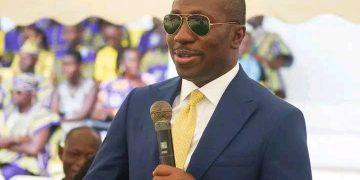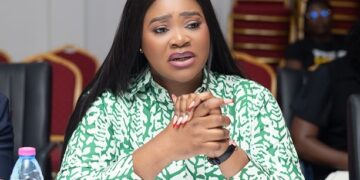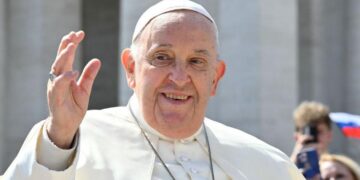Islamic microfinance has been designed to target the yearning demands of the poor who are usually at the bottom of society’s social class.
It is to provide opportunity, so that Islamic economics’ social justice will be achieved.
It is expected that the Islamic microfinance design will provide considerable positive motivation for economic development through reducing poverty and unemployment by enhancing economic capacity and social capital accompanied by entrepreneurial spirits with moral and Islamic values.
Islam strongly promotes charity from the giver point of view yet discourages the sole dependence on charity by the poor and thus, discourages charity from the receiver point of view.
Islam encourages economic empowerment. In other words, it encourages how to ‘hunt for fish’ rather than how to ‘give out fish for free’.
Owing to this, a famous authentic tradition of the messenger of Allah (may the peace and blessings of Allah be upon him) vividly illustrate this scenario. From Sunan Abi Dawud, 1641, a man from the people of Ansar (Madeena) came to the prophet to beg. The prophet (SAW) asked him: have you nothing at home? He replied: yes, a piece of cloth and a wooden bowl.
The prophet asked him to go and bring them and he sold these two items to a companion at a price of two dirhams. He then gave back the two dirhams to the man to use one dirham for food for his family and the other dirham for an axe.
He brought the axe he was asked to buy to the prophet and the prophet fixed a handle to the axe himself using his own hands, and gave it back to the man and said to him “go gather firewood and sell, and do not let me see you for a fortnight”.
The man went and did what the prophet asked him to do and he earned ten dirhams. He bought a garment and food with some of the ten dirhams. He then came back to the prophet and told him what has happened. The prophet said to him “this is better for you than that begging which would have shown on your face on the day of judgement.”
The components of this hadith can be seen as blueprint to successful microfinance program exhibited by the prophet (SAW).
First of all, it indicates that Islamic microfinance must be accessible to the poorest of the poor. The prophet was the spiritual as well as the political leader of the Muslims and he was accessible to the poor and needy at all time for economic and financial assistance.
Secondly, the, carful assessment of the financial health of the poor by the prophet (SAW) through empathy, based on contribution and beneficiary stake, lest the poor consumes the capital instead of investing it into productive venture.
In addition, the prophet (SAW) transformed the unproductive assets of the beneficiary into income generating ones through diligent valuation.
Thirdly, meeting the basic needs of the poor on a priority bases and investing of the surplus in a productive asset is an honest way of dealing with poverty alleviation in the society.
This is also making the poor amongst us recognize that at least someone cares for their financial and economic improvement. It highlights the need to take into account the consumption needs of the clients before expecting them to create wealth.
Moreover, the prophet (SAW) was also directly involved in bringing out a remedy to the poverty conundrum of the man. It signifies that Islamic microfinance organizations must also prioritize on building the capacity of their clients to enable them raise themselves out of poverty.
Direct involvement of the program in capacity building in the runup to income generating, and technical assistance to the beneficiary. It is a unique form of a commitment and involvement on the part of the prophet (SAW) in the program of poverty alleviation.
Also, the prophet (SAW) proffered technical assistance in the form of imparting requisite training to the beneficiary for carrying out the business plan which is also the income generating project. The need to establish an effective linkage between financial assistance and technical assistance is emphasized among microfinance professionals as never before.
Furthermore, monitoring through a time bound schedule and impact assessment through a feedback mechanism is imperative as far as the remedy to alleviating poverty is concerned.
And finally, strong discouragement to dependence on charity for livelihood. This means economic empowerment is the key word that rules out dependence on charity which is only permitted to the poorest of the poor and those overburden with debt with no means of payment in sight.
In this hadeeth, the prophet acted the role of the Islamic microfinance and the man was his client. The diligent and meticulous skills demonstrated by the prophet of Allah (may the peace and blessings of Allah be upon him) to lift the man out of his poverty, symbolizes industriousness not only in creating wealth but also in spreading it to the deficit sectors of the economy.
This also symbolizes what ought to be for Islamic microfinance institutions, real and practical poverty alleviation venture.
In a nutshell, the prophet of God has clearly shown the way to go as far as economic and financial inclusiveness, and poverty alleviation is concerned.
To be continued
Yahaya Iliasu Mustapha
The writer is an Islamic Banking and Finance patron and advocate in Ghana.
Email :yahaya0246873726@gmail.com
Facebook account: facebook.om/Yahaya.iliasu.94
Publish and verify the assets of public appointees – Martin Kpebu
Private legal practitioner, Martin Kpebu has reiterated the need for the publication of all the assets that are declared by...
Read moreDetails



















































































